We all have an EDC kit.
For some of us, it’s just a wallet and keys; others have that, plus some defensive equipment like a CCW.
But how many of you carry medical gear also?
If your personal safety and the safety of your family are on your mind, then you should reconsider what is in your EDC. In your daily life, you’re far more likely to require first aid than you are to defend yourself from an attack.
And if you do defend yourself from an attack, you should know how to save your own life if you’re injured.
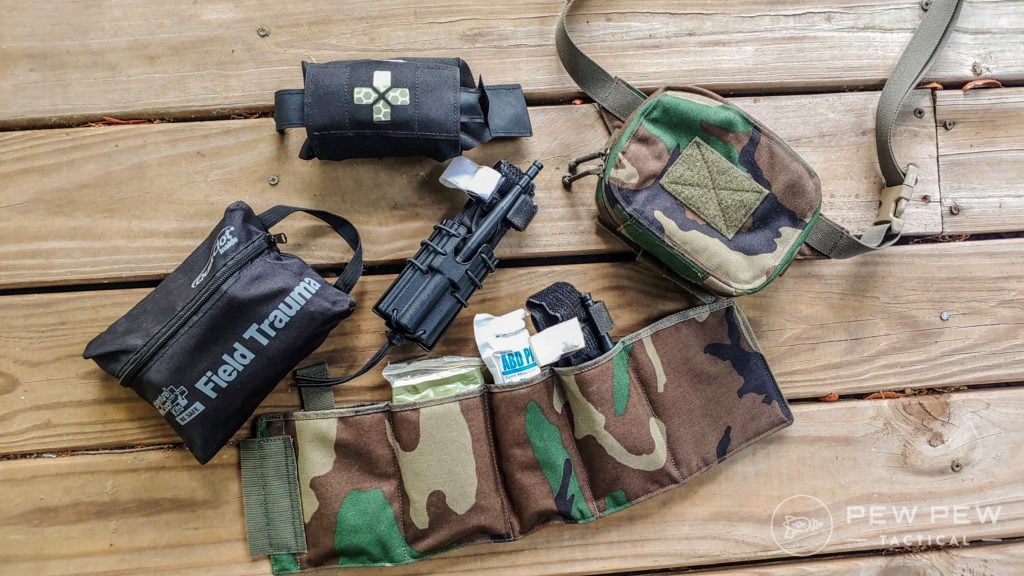
We’re going to break down exactly what medical gear is useful to carry and how to carry it!
Editor’s Note: New kits added April 2023!
THE QUICK LIST
-
Most Comprehensive Kit
-
Best Ankle Kit
-
Editor’s Pick
-
Best On Body Option
-
Best Pocket Kit
Table of Contents
Loading…
Why Do I Need an EDC Medical Kit?
You might not use it as much as you use your knife, but I’ll bet you’ll use it more than you ever use your gun.
Medical gear of some kind is a must-have for everyday carry. Using a gun defensively is a rather rare event, and thankfully so.
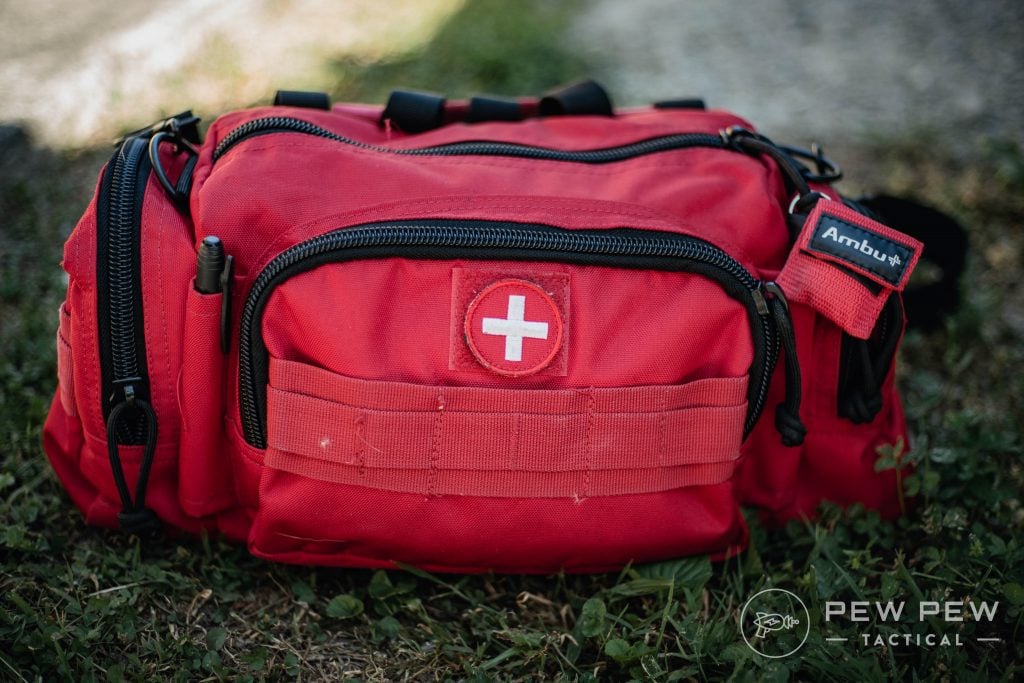
I want you to lean back, puff a cigar, and think about how many times you could have used a medical kit in your everyday life and then compare it to your use of your EDC handgun.
I bet most people have been in more situations in which medical gear and some basic medical training would have been more valuable than a firearm and firearm training.
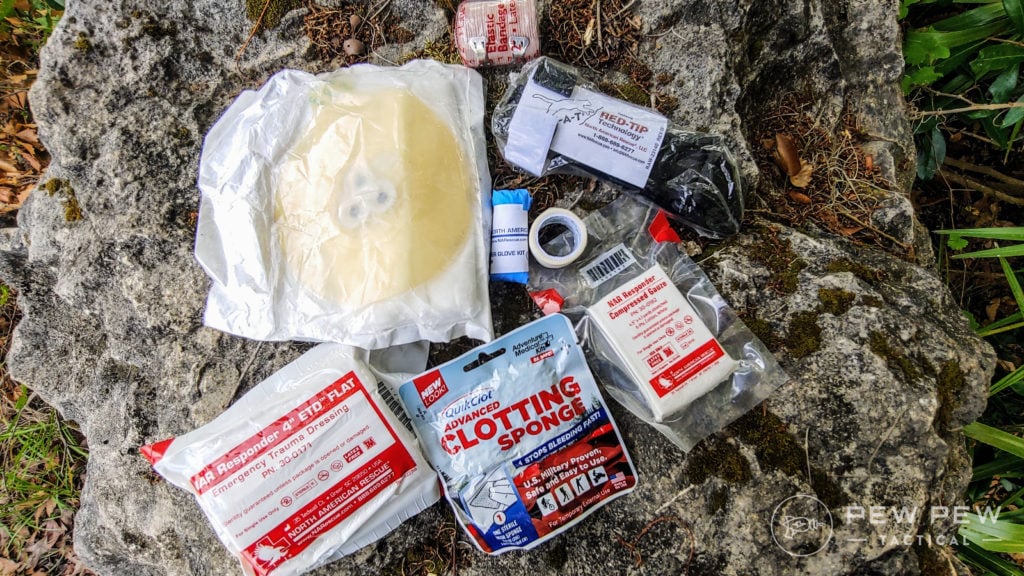
That’s not to say you don’t need to carry a gun; you don’t have to choose between carrying a gun and carrying some medical gear.
Carry both.
I’m simply trying to assert the importance of carrying medical gear and obtaining medical training.
Best EDC Medical Kit Carriers
Jacki, the Editor-in-Chief, here…I wanted to toss in a few of my favorites as an American Heart Association Basic Life Support instructor. I regularly teach first aid and CPR, and the first three kits are ones I recommend to students.
1. MyMedic Mini IFAK
The MyFAK Mini Pro from MyMedic is a solid option for an EDC kit you intend to stow in a backpack or tote.
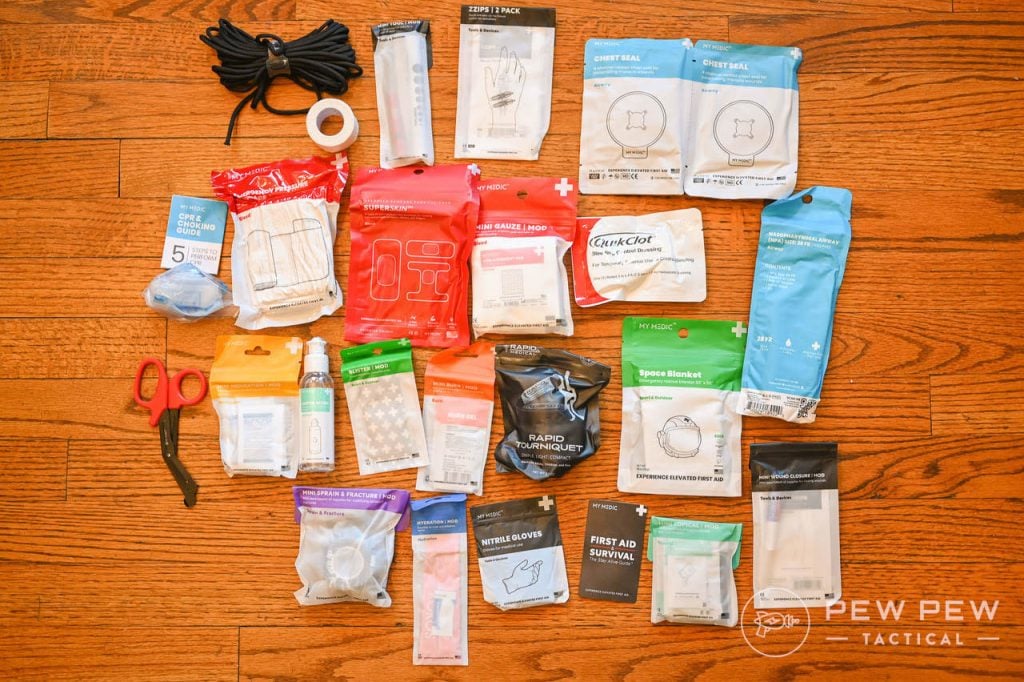
It features a good selection of items you would need in an emergency. You can pick from a standard model or the pro model, which offers a few more items than the base.
The standard kit includes:
- Saline wash
- Scissors
- Space blanket
- Superskin bandage
- CPR shield
- Blister strips
- Mini gauze
- Burn gel
- Hydration tablets
- Meds (Ibuprofen, Aspirin, etc.)
- Topical items (chapstick, hand sanitizer, ointment, etc.)
- Finger splints
- Penlight
- Tweezer
- Whistle
- Gloves
- Cloth tape
- First aid booklet
Prices accurate at time of writing
Prices accurate at time of writing
-
25% off all OAKLEY products - OAKLEY25
Copied! Visit Merchant
It’s a tad pricey but worth it. Read more in our review of the MyMedic MyFAK Kits. And using PEWPEWTACTICAL15 to save 15% off sitewide will save you a bunch.
2. Mountain Man Medical Ankle IFAK Trauma Kit
If you’re interested in carrying on your ankle, I recommend the Mountain Ankle IFAK Trauma Kit from Mountain Man Medical.
This kit is a decent way to carry essentials on the go without the need for a backpack. Warning: you can’t wear skinny jeans with this, but if you prefer bootcut pants, you should be alright.
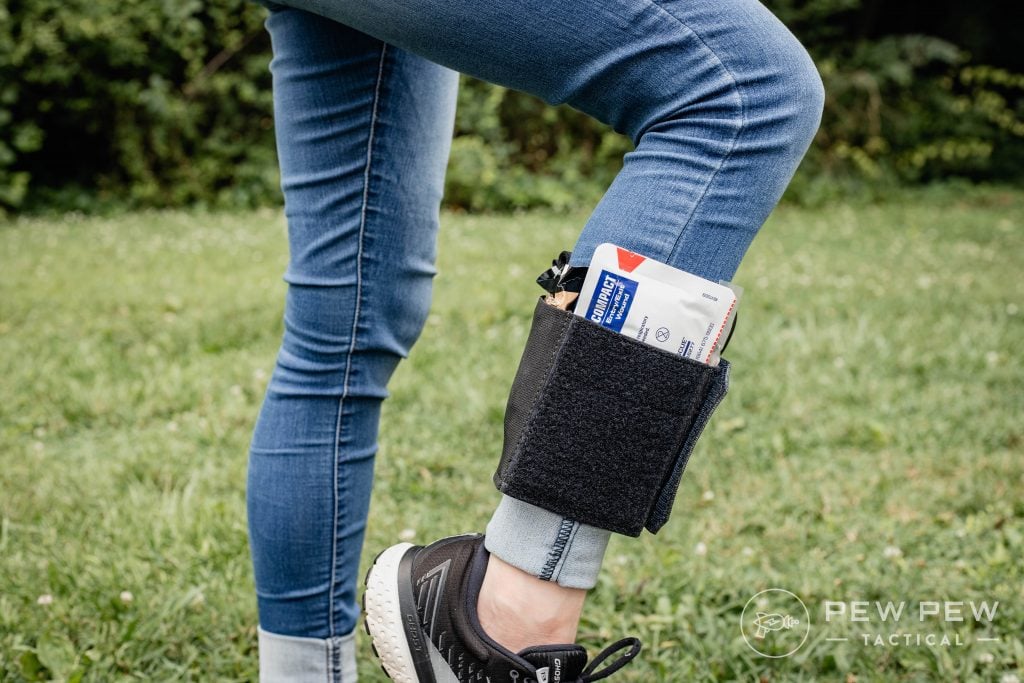
I really like that the kit is customizable. If you don’t want something in there, simply pull it out. You can really tailor this to your environment and carry it in an inconspicuous way.
It comes with:
- Ankle cuff
- Choice of tourniquet
- Choice of hemostatic dressing
- Hyfin Compact Twin Chest Seal
- H&H Medical Mini Compression Bandage
- Gloves
- Trauma shears
My only criticism is that if you have a smaller ankle, it might slide around a bit. Other than that, it’s a worthy option.
Prices accurate at time of writing
Prices accurate at time of writing
-
25% off all OAKLEY products - OAKLEY25
Copied! Visit Merchant
We have a full review of Mountain Man Medical’s kits if you want to learn more!
What do you think of Mountain Man Medical? Rate them below!
3. Medical Gear Outfitters FATPack 4×6 Small Kit
Another option for those that want a smaller, more compact kit is the FATPack 4×6 Small Kit from Medical Gear Outfitters.
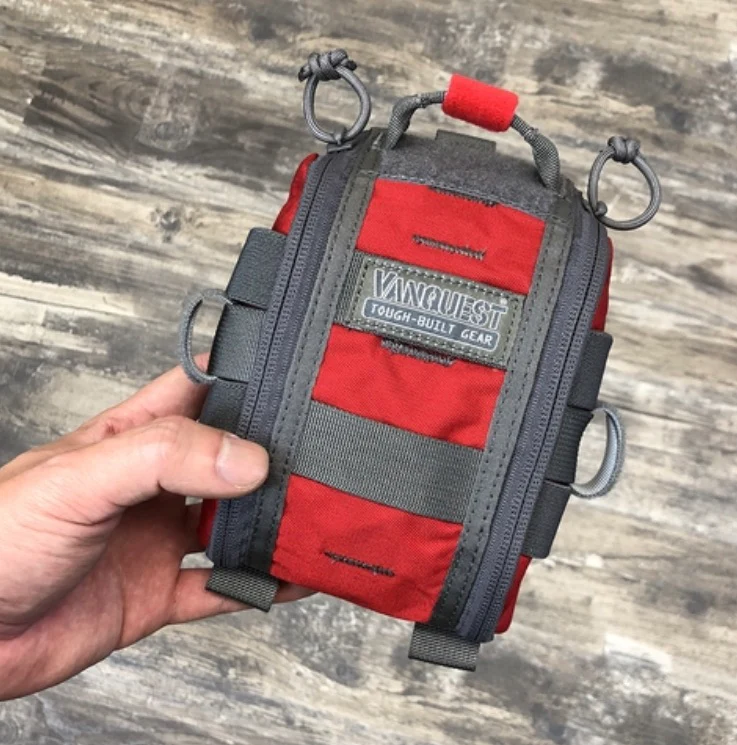
This kit is perfect for smaller purses or bags and even has a MOLLE panel so you can attach it using MOLLE Sticks. You can also convert it to hook-and-loop so you can toss it on the outside of a backpack.
This kit comes with a lot of goodies in a small space:
- (2) 5×9 Trauma Dressings
- (5) 4×4 Gauze Sponges
- (5) Butterfly Bandages
- (2) Band aids
- (2) Triangle bandages w/ safety pins
- (2) Rolls of 3′ cling
- (6) Alcohol pads
- (2) Triple antibiotic ointment
- (1) One-inch roll cloth tape
- (1) EMT scissors (4) Large non-latex gloves
- (1) Aspirin 325 – 2 tablets
- (1) Benadryl 25mg
- (6) Bite and Sting Pads
I really like that it caters to those that don’t want to lug a big pack around or can’t ankle carry.
Not to mention, you can choose what color kit you want from four options — wolf gray, tan, black, and red.
I also think it’s really well-priced for what you get.
Prices accurate at time of writing
Prices accurate at time of writing
-
25% off all OAKLEY products - OAKLEY25
Copied! Visit Merchant
Now on to Travis’ recommendations!
4. Blue Force Gear Micro Trauma Kit NOW!
Blue Force Gear makes a pouch or a complete kit known as the Micro Trauma Kit NOW!
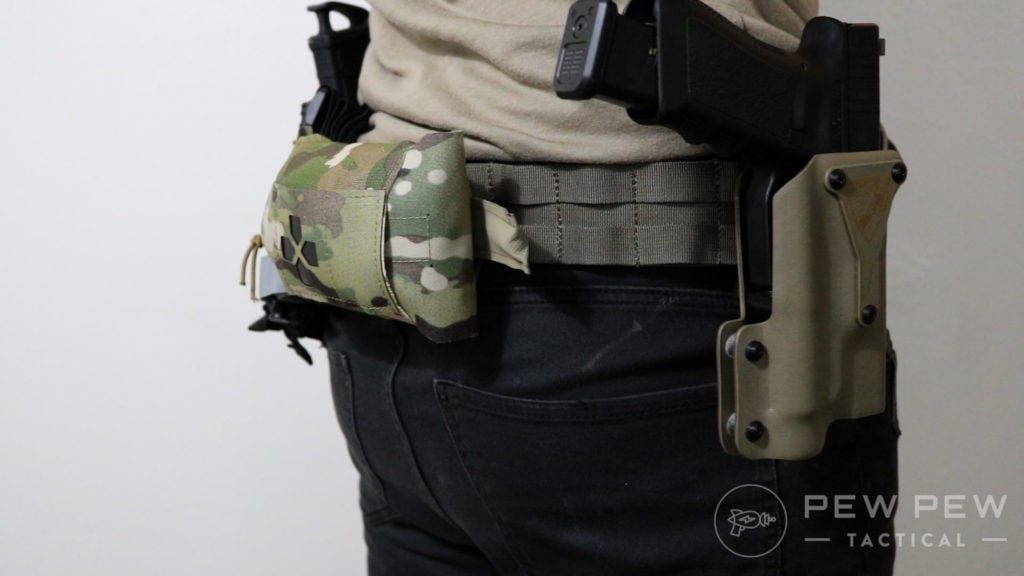
This is a sweet belt-mounted kit that allows for ambidextrous access to your medical gear with a pull-out sleeve that holds it all together.
If you want something to carry on body and within easy reach, this is the kit for you.
It comes in three options…essentials, pro or advanced.
Prices accurate at time of writing
Prices accurate at time of writing
-
25% off all OAKLEY products - OAKLEY25
Copied! Visit Merchant
The base includes:
- Gloves
- QuickClot dressing
- Trauma dressing
- Flat fold tape
- Compressed gauze
- Hypothermia blanket
This kit is slightly bulky for EDC, but it’s functional and very well-made.
5. Dark Angel Medical EDC Trauma Kit
Listen, this is a big kit. It’s not aimed at concealed carry by any means or casual wear.
It’s a kit you can carry on a job site, at work, and at places like the range, or one to keep in your car. It hooks to a belt, but you’ll need more than an XL t-shirt to carry it.
It’s 4.5 inches high, 3.25 inches wide, and 1.25 deep. So not the smallest kit out there. With size comes equipment, and the Dark Angel Medical EDC Trauma kit is stacked.
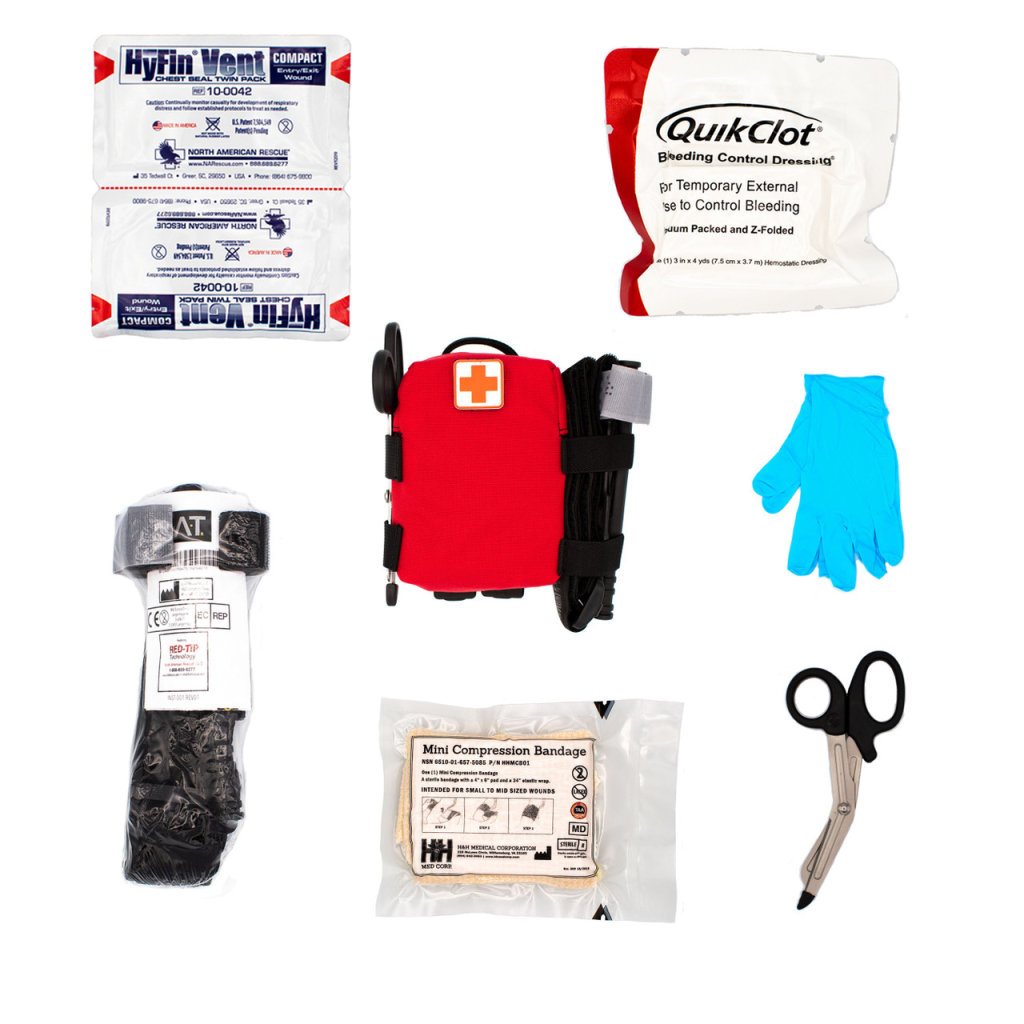
Outside of being able to choose a few different pouch options, you also get a full load of gear. This includes your choice of a TCCC-approved tourniquet like the Gen 7 CAT or SOFTT-W and an option for mini medical shears.
Inside the pouch sits a set of hemostatic gauze, a pair of nitrile gloves, a compression bandage, and a chest seal. There is also a little room left to add your own goodies.
Prices accurate at time of writing
Prices accurate at time of writing
-
25% off all OAKLEY products - OAKLEY25
Copied! Visit Merchant
It’s not the smallest, but it’s a capable option for daily use if you don’t mind a belt-mounted pouch roughly the height and width of a modern cell phone.
Dark Angel also has a kit-for-life guarantee. If you use your kit, they’ll replace it for free!
6. Warrior Poet Society EDC Ankle Medical Kit
Another ankle kit, but this one comes fully stocked from the Warrior Poet Society. This ankle kit is designed to be comfortable, easy to wear, and concealable.
It features a number of pockets, and each is sized specifically to fit certain gear. The kit includes that gear, so it’s a plug-and-play option.
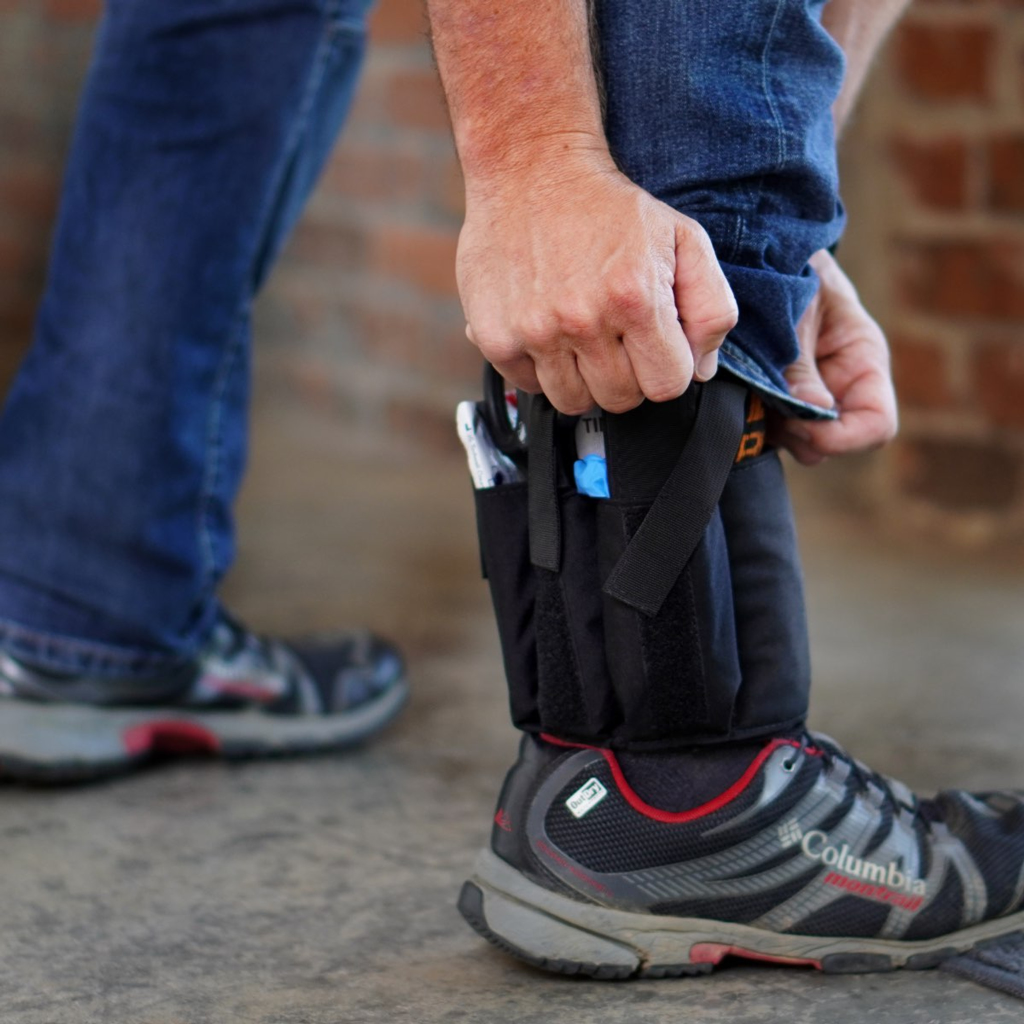
The gear and where it goes is as follows:
- Vertical Pocket 1: NAR Compressed Gauze and a Nasopharyngeal Airway (NPA) size 28F
- Vertical Pocket 2: NAR Elastic Wrap Bandage – 3″ x 5yd
- Vertical Pocket 3: Trauma Shears
- Vertical Pocket 4: C-A-T Tourniquet and Sterile Nitrile Gloves
- 2 Horizontal Pockets: Hyfin Compact (Vented) Chest Seal Dressing – Twin Pack
That’s a lot of gear on your ankle, but it seems to conceal well under nothing more than a simple pair of jeans. Several pockets have some extra room for other gear, so you can customize your kit as needed.
Prices accurate at time of writing
Prices accurate at time of writing
-
25% off all OAKLEY products - OAKLEY25
Copied! Visit Merchant
7. Tulster TACMED Pocket Medical Kit
The Tulster TACMED Pocket Medical Kit is probably the complete pocket kit on the market. It comes from a holster company with a reputation for deep concealment.
The TACMED kit is designed for cargo or shirt pockets, not necessarily for your skinny jeans.
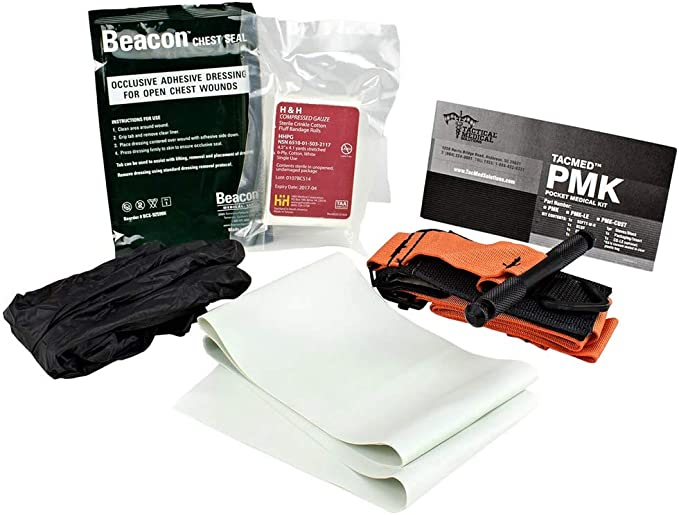
The pouch isn’t a pouch but a sealed heavy a duty plastic casing. Once broken, it opened, but that’s the nature of minimalism.
Inside the tightly packed bag sits the following:
- SOF T Tourniquet
- Esmark bandage
- Compressed Gauze
- Beacon Chest Seal
- Nitrile Gloves
It’s a small, single-man kit, but you can toss it in your back pocket and just forget about it!
Tulster’s TACMED kit is a solid all-around option for daily carry and provides quite a bit of gear in such a compact package.
-
25% off all OAKLEY products - OAKLEY25
Copied! Visit Merchant
But what if you want to build your own kit. What supplies do you need? Keep reading…
Basic EDC Medical Kit List: What Should Be In Your Kit
Tourniquet
Specifically a tourniquet with a windlass that has been approved by the Committee on Tactical Combat Casualty Care.
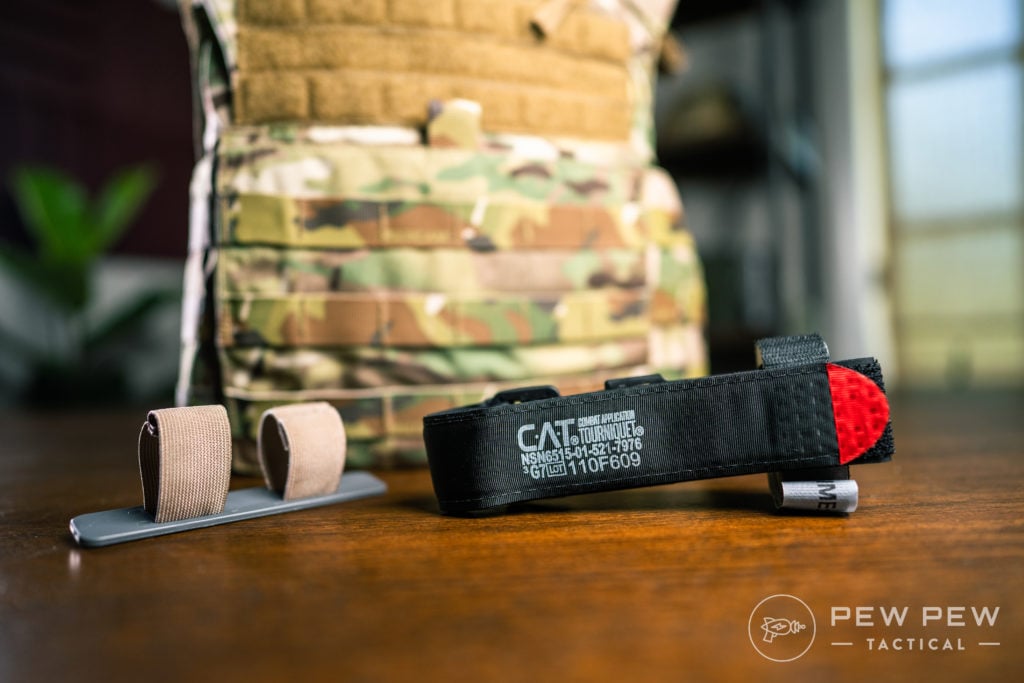
This list is small but, luckily, bigger than ever. I prefer the CAT Gen 7 because I’m well trained on it; they are common and easy to find, as are carriers designed for them.
Prices accurate at time of writing
Prices accurate at time of writing
-
25% off all OAKLEY products - OAKLEY25
Copied! Visit Merchant
Find more recommendations in the Best Tourniquets & Holders.
Hemostatic Gauze
Hemostatic agents are designed to help your blood clot faster. Hemostatic gauze, in general, is invaluable and affordable and is more effective than regular gauze.
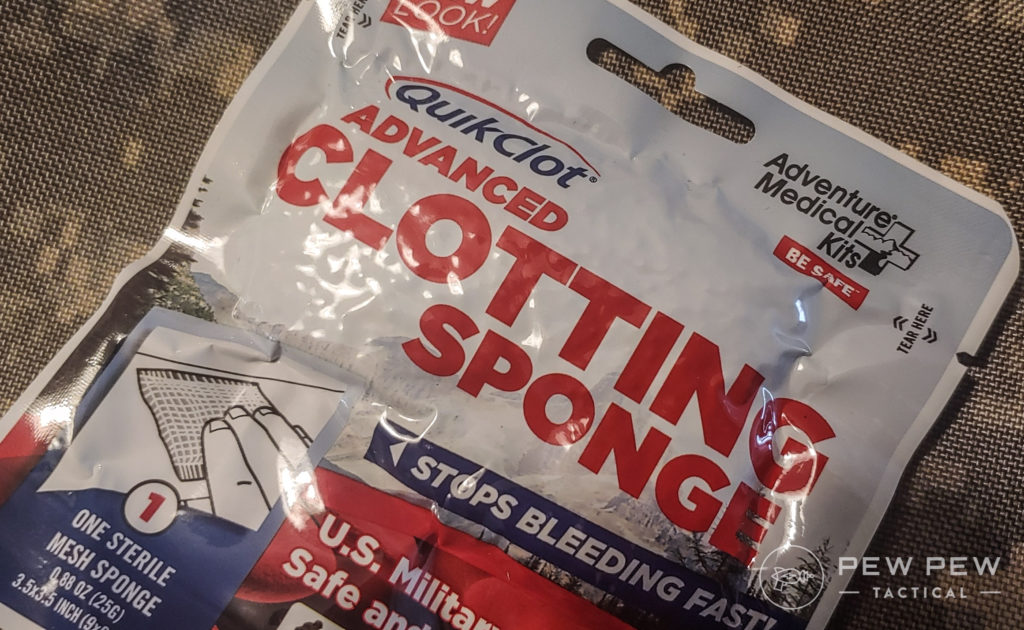
Hemostatic gauze is made by a company called QuikClot and is the gold standard.
Prices accurate at time of writing
Prices accurate at time of writing
-
25% off all OAKLEY products - OAKLEY25
Copied! Visit Merchant
Big Band-Aids
A lot of memes are made calling the idea of band-aids silly in a medical kit.
They are ultra-small, and light, and they squeeze anywhere. They’ve also been super valuable to me for small extremity wounds.
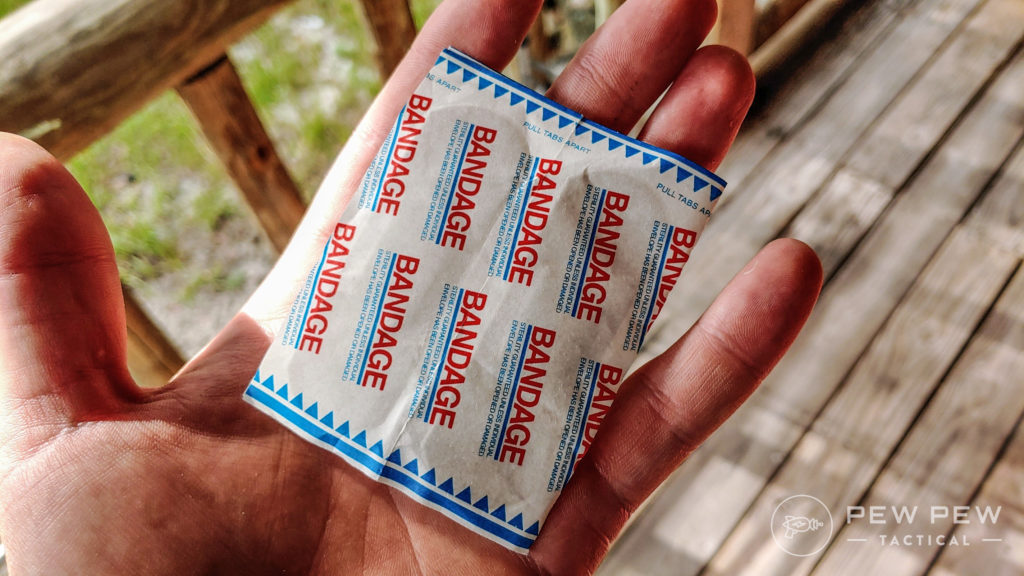
For example, I once caught myself on the wrong side of Emerson CQC 7 and cut the hell out of my thumb.
A band-aid was a quick solution to hold the skin together and stopping the bleed.
-
25% off all OAKLEY products - OAKLEY25
Copied! Visit Merchant
Compression Bandages
Compression bandages hold everything in once it’s packed properly. Elastic bandages rolled tightly as excellent companions to your EDC kit.
-
25% off all OAKLEY products - OAKLEY25
Copied! Visit Merchant
A second option, and one worth considering also, is something like an Israeli Bandage Battle Dressing. This is effectively a compression bandage and a trauma pad in one, combined with a plastic clip to increase direction pressure on the wound.
Prices accurate at time of writing
Prices accurate at time of writing
-
25% off all OAKLEY products - OAKLEY25
Copied! Visit Merchant
Chest Seals
Just assume it’s a sucking chest wound if it’s in the upper torso and apply a seal.

I still use an old seal, but while writing this, I ordered smaller NAR HyFn chest seals. These small ones make it easy to carry two or three.
Prices accurate at time of writing
Prices accurate at time of writing
-
25% off all OAKLEY products - OAKLEY25
Copied! Visit Merchant
Gloves
Stay sterile, and tightly press some simple nitrile gloves into a small package and shove it in.
Prices accurate at time of writing
Prices accurate at time of writing
-
25% off all OAKLEY products - OAKLEY25
Copied! Visit Merchant
Optional Gear
Regular Gauze
Simple, regular gauze can be perfect when you don’t need hemostatic and can be a friendly helper to hemostatic gauze to fill a wound cavity.
-
25% off all OAKLEY products - OAKLEY25
Copied! Visit Merchant
Medical Tape
Great for bandaging deep cuts and lacerations that don’t require gauze or a hemostatic agent.
-
25% off all OAKLEY products - OAKLEY25
Copied! Visit Merchant
Super Small Flashlight
A handy device should you need to use your kit at night and need to see what you’re doing. Better than your normal flashlight because it can be easily held in your mouth as you work.
-
25% off all OAKLEY products - OAKLEY25
Copied! Visit Merchant
Training: More Important Than Gear
Let’s talk training because I do think it’s incredibly valuable to have. A little medical training and a lot of practice can go a long way.
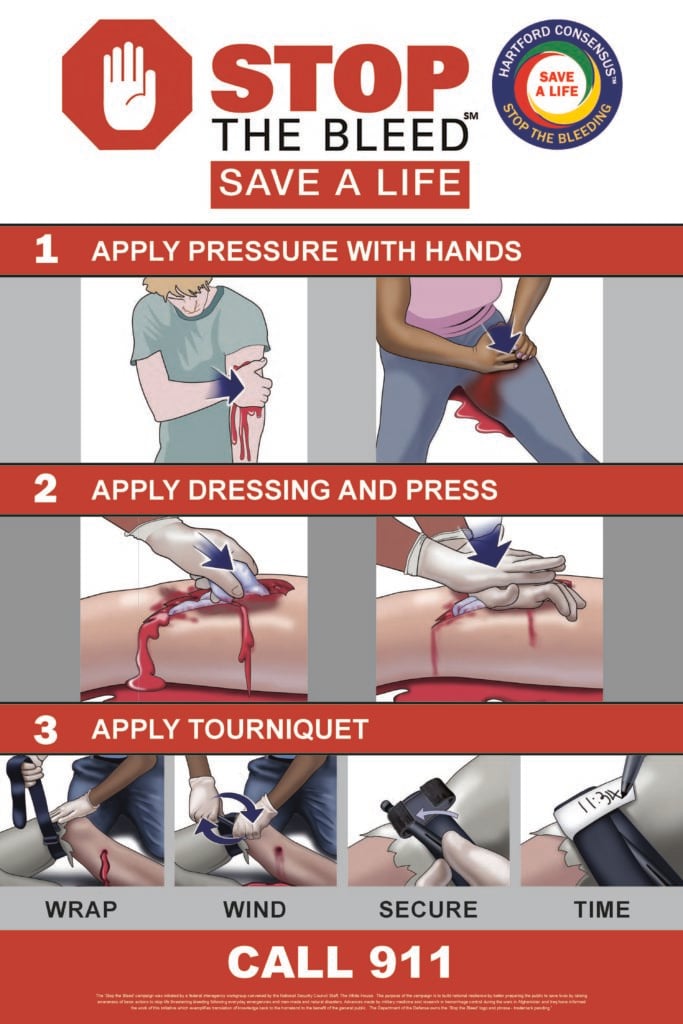
Way back when I was a cool guy in the Marine Corps, I did a lot of good training involving firearms, grenades, hand-to-hand skills, breaching, clearing rooms, and all that fun stuff.
To this day, I still say the best training I ever received was my medical training.
From Combat Lifesaver to the controversial but very effective live tissue trauma training. I remember sitting exhausted, covered in sweat and blood, thinking how valuable the training was after live tissue trauma training.
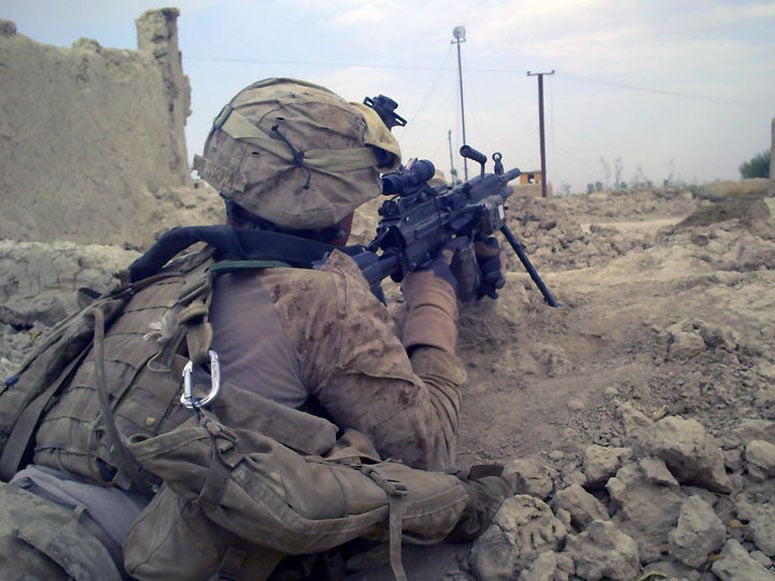
Throughout my entire career, we practiced first aid training. We practiced stopping the bleed, checking airways, practicing with tourniquets, and keeping our skills sharp.
These skills saved lives and limbs, and in one case, a Marine from my company stopped and saved the life of a 4 AM car crash victim.
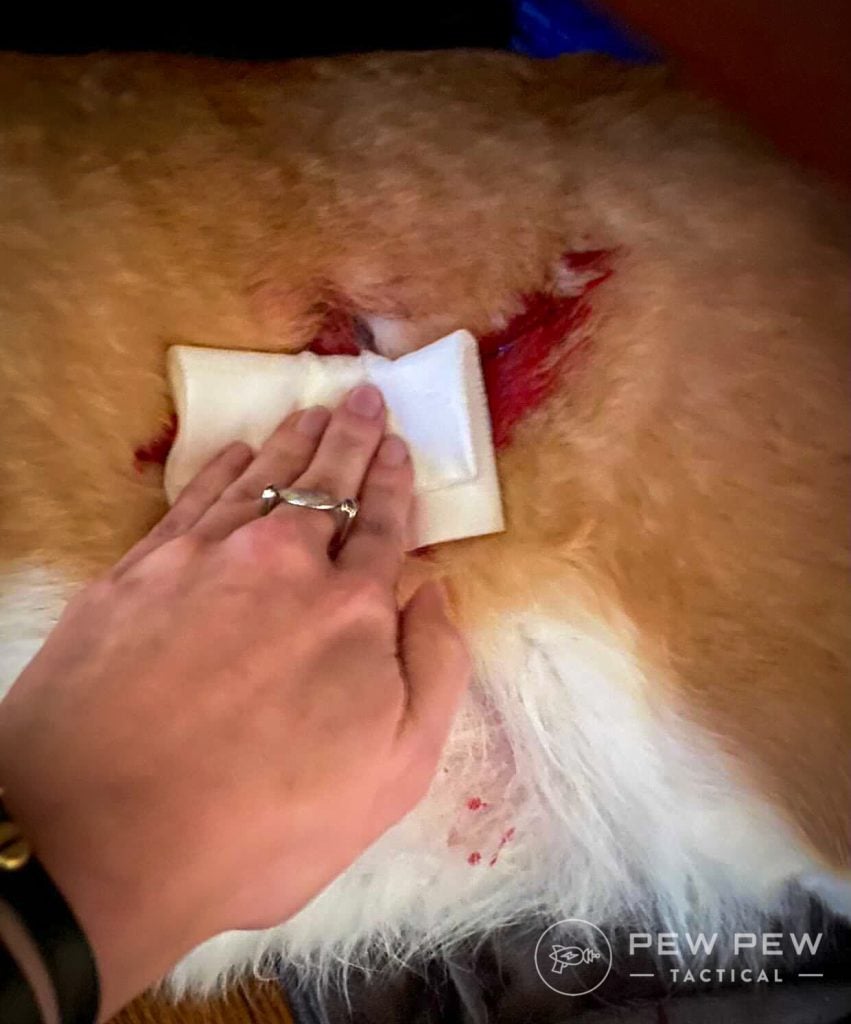
Knowledge weighs nothing, and training to use your gear is an awesome objective. The question is, where do you get training?
We have a comprehensive list of first-aid training for both beginners and those that have been around the block, so check out our list of Best First Aid Classes.
Final Thoughts
A good EDC medical kit makes the fine line behind life and death a little thicker. It can be literally invaluable to have and should be a major consideration for any prepared person.
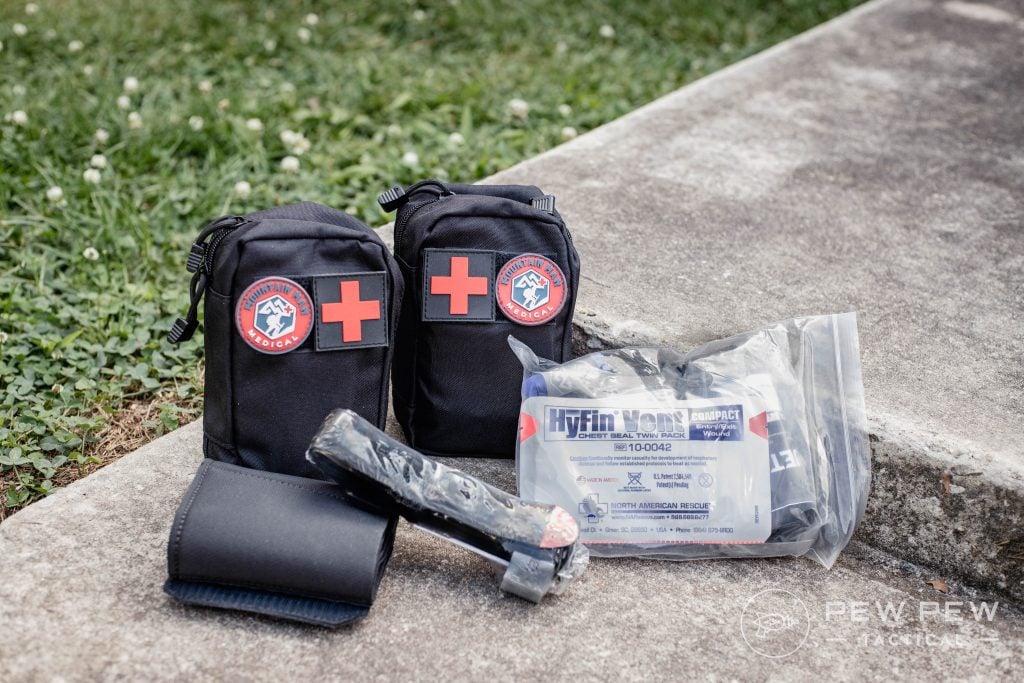
If you’re not sold on carrying one daily, consider tossing it in your vehicle and at least having it close at hand.
What med kit do you carry? Let us know in the comments below. For more on medical-related gear, check out our recommendations for Best IFAKs (Individual First Aid Kits) and Range Med Kits.

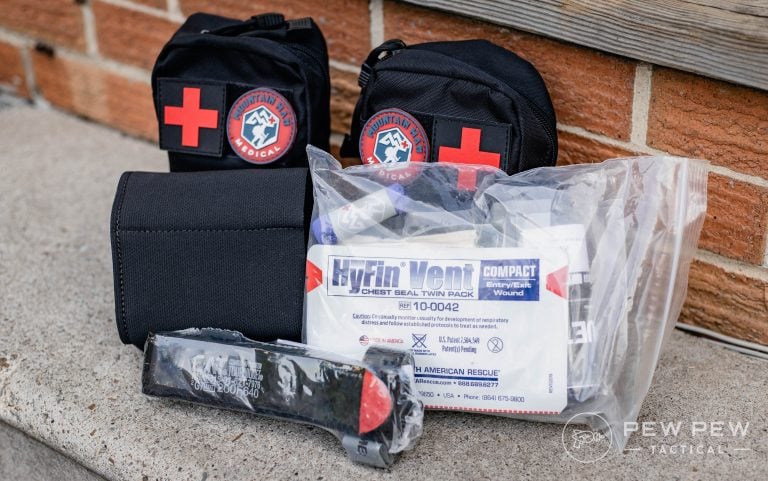
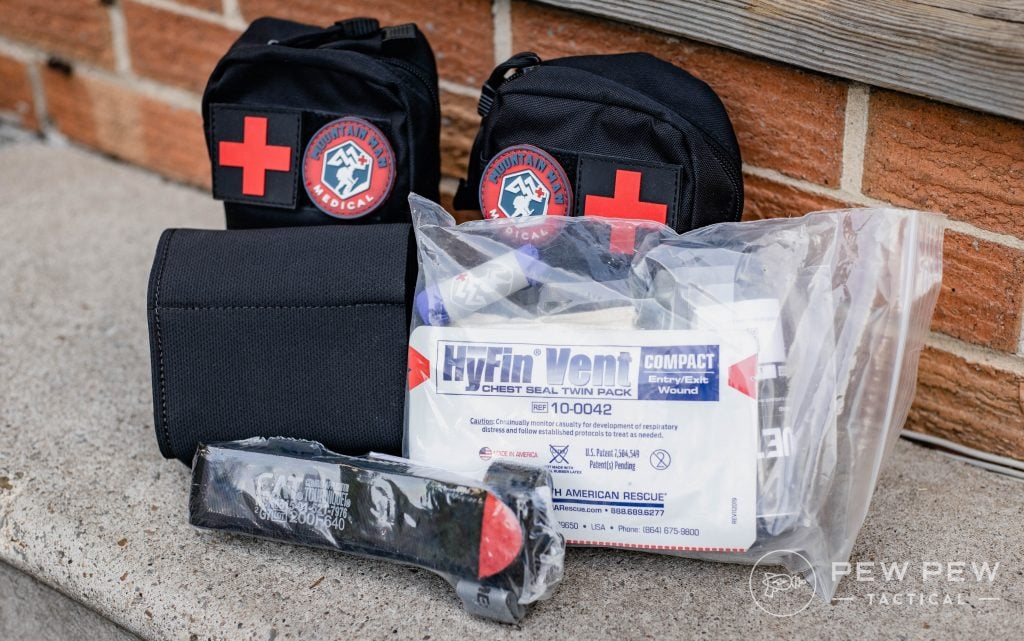



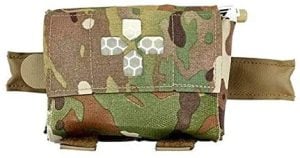







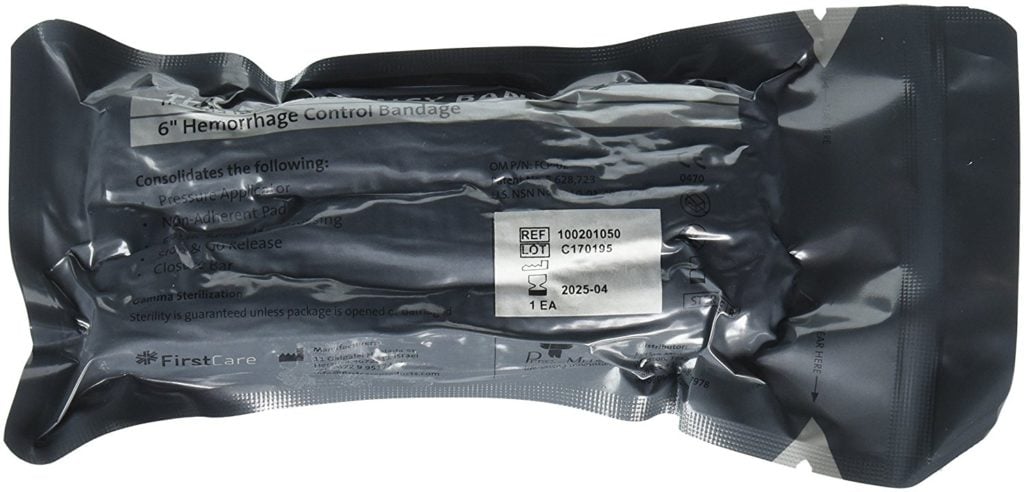
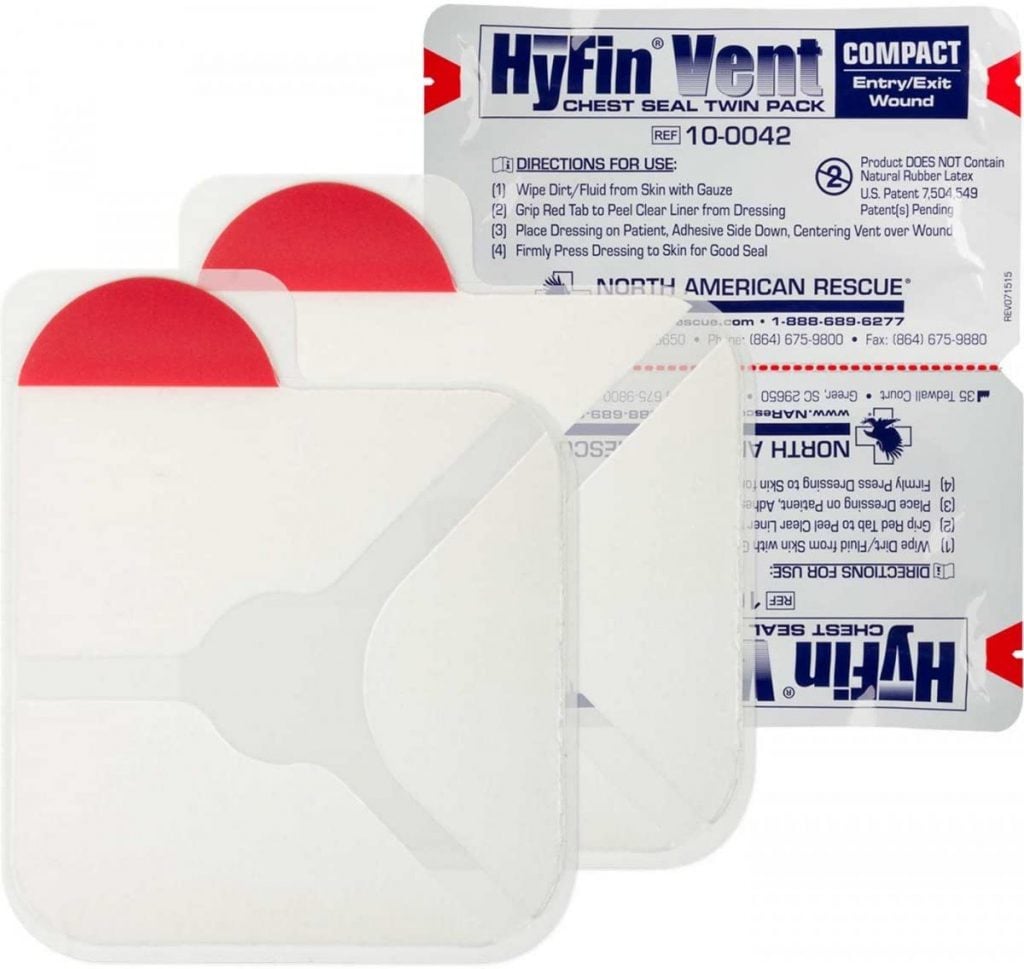











20 Leave a Reply
A tourniquet is excessive. Seems really "tactical" since it is in the military FAK, but unless you're in a war zone, not needed. Wound pressure or arterial pressure works. Now you just need a bandage for the pressure. 4X4 gauze works well. Band-Aids, these are for minor wounds, but can be used like SteriStips on larger wounds. For sucking chest wounds, some plastic wrap and cloth tape will work. Tape down three sides and you have a Heimlich valve. Antibiotic ointment, cloth tape, gauze rolls and 4x4's will cover a lot of injuries. The gauze roll can be used to create a splint for fractures. Just some basic, non-sexy, tools for a wound kit. Add some medications, and you're ready for almost any situation.
Ahem, Isaw a fake CAT TQ on there! Now, my only official medical training is a Stop The Bleed class but I have watched a lot of Prepmedic and Skinny medic so, yeah. It's either an old CAT or a fake and for EDC I would carry a TQ, wound packing gauze (preferably QuikClot but I cant afford this so I just carry NAR), some chest seals, 325 mg of aspirin, 25 mg benadryl, (the rest I don't have for EDC) chest seals and a emergency trauma dressing. Only get you medical supply s from certified manufacturers like medical gear outfitters, North American Rescue and Rescue Essentials. DON'T GET MEDICAL FROM AMAZON! To Ms. Billings and Mr. Pike, I was NOT trying to be mean and sorry if that's how it came off, I guess too much YouTube (lol)!
Guys, I may have been wrong...
When I was looking for an emergency medical kit, I stumbled across the 7 Best EDC First Aid & Medical Kits of 2023: List & Carriers. It quickly became apparent that this was the best resource out there for finding a comprehensive list of first aid and medical kits with detailed descriptions of each one. I now have peace of mind knowing that if something happens in an emergency situation, I am fully prepared! Come across Mantastore.co.uk and hope you can visit this too to get more information.
Old player, new product. OLAES® Hemostatic Bandage gives you a twofer. Combines a solid trauma dressing with chitosan hemostatic gauze packed within. Most likely if you need your hemostatic, you are gonna need a trauma bandage too. Makes for a nice compact ankle kit with Hyfin compact and a G7CAT.
Great article. I would like to recommend the Snake Staff Systems Tourniquet. It’s a perfect everyday carry piece.
Nicely done article! I have been exposed to the need to have quality medical equipment for many years. This actually started in Boy Scouts, then was supplemented by the needs impressed by combat in VN. Over the years, I have seen medical equipment get better and better, to the point where vital information is transmitted to the Medical team that responds to the "what the heck do I do now" situations which is sometimes imperative to keep someone alive. I have seen tourniquets go from "use your belt" to the amazingly effective ones used now. I have seen the development of hemostatic gauze/pellets/etc.. All great stuff! I went to the Warriors Expo in San Diego a few years back and was amazed by all the cool new stuff - especially the medical. Overall it has made survivability much more plausible. I do have one add to consider - CoBan tape. That stretchy adhesive stuff. Works as medical tape or wrap or to make a big band aid. Works well in conjunction with Quik Clot. Strong enough to use for a good compress. Had to use it once, works great! It has a permanent place in all my kits now!
Art B
Vet of VN & 9 other places
Retired Executive Protection Agent
Thoughts on anything made by Field Craft?
Haha I took that live tissue trauma training course with 3/2 in '07. My pig's name was Steve. I packed a ham & bacon wrap for the last day in honor of Steve. I couldn't believe how much the quick clot burned my hands while stopping an arterial wound.
Good article, I wholeheartedly agree with getting proper first aid training.
As for additional things to have in your car or truck ALWAYS: Multi-tool leatherman, Duck tape, roll of paper towels, roll of toilet paper, bottled water and small bottle of liquid soap - preferably Dawn. Added to a travel med kit, with blood clot bandage and tourniquet. I also recommend you have a blowout kit in your gun bags. Lastly, get in the habit of checking expire dates spring and fall just like you would for your BOB. Being prepared is more than a motto.
I find myself needing pockets. The common blue jeans pockets can barely carry a wallet, keys, coins and pocket knife. I’ve tried to add to that but it’s just not very comfortable. For a while I wore what is called a photographer vest. Lots of pockets! I could carry an IFAK contents dispersed in 4+ pockets. I can also conceal my pistol in a chest rig or underarm carry. Unfortunately the fabric, rip stop cotton, isn’t very durable. Plus my favorite vest was discontinued for unknown reasons. What to do... Fast-forward a year or so later. While clearing out the basement, I came across some of my BDU/cammies. I figured that I could have my pockets while using a perfectly serviceable jacket. The tacticool side is I get to wear my uniforms from yesteryear. I also found a set of cammies at a yard sale in the SE Asia tiger camouflage. I like it, it fits and has pockets. So I’ve been wearing the jacket now for over two years. I carry a pen, notepad, earbuds, microfiber glasses cleaning cloth and still have room for other things. I have room to add or subtract items based on, whatever seems best at the current time. A tourniquet, gauze, nitrile gloves, tape, whatever I think the situation warrants.
As concealed carry attire, it’s okay. Wearing camouflage doesn’t really hide stuff very well just because few people wear it outside the military. BDU’s stick out like a sore thumb at a hammer convention. Where I live in BFE, camouflage is considered normal wear.
A lot of medics I've talked to primarily used gauze rolls, ace bandages, chest seals, chest decompression needles, and sam splints. They had other stuff as well, but these were the things that they packed a lot of. A lot of them didn't even bother with the Israeli dressings since they could just throw a gauze roll under an ace wrap to do the same thing. I am really surprised that sam splints weren't covered in this article, they are lightweight, compact, reusable, and work great. I can't see any good aid kit not including them.
Hello! Splints aren't really an item for Every Day Carry, if you're building a static medical kit then it's a good item to have if you know how to use them!
I second the SAM Splint recommendation (I'm a former Army combat medic and long term civilian Paramedic), many GSW in limbs involve bone fractures, and part of stabilizing the wounds involve fracture stabilization. SAM's come in both flat and rolled forms these days, one of the flat ones can be folded a bit more and stuffed behind everything else in a IFAK or EDC medic pouch.
A former Navy Corpman told me he always included tampons as part of his medical supplies while Iraqi. He got alot of flack from the Marine unit he assigned to, but once he saved a Marine's life from a gunshot wound, the flack stopped and everytime he turned around, someone from the unit would put another box of tampons on his bunk.
Tampons are a horrid piece of gear for medical use do not use tampons. They are designed to absorb blood not to stop bleeding.
They work well enough to be used for nose bleeds by every high school wrestling team in the country for decades.
Nitrate gloves are great but don’t buy “tacti-cool” black gloves. No one can tell if it’s blood on black gloves.
I wouldn't recommend buying any first aid supplies on Amazon. First, you have the issue of Chinese knockoffs. Secondly, assuming that you are actually buying the real-deal, you also have to worry about expiration dates, especially on products like QuikClot. Buy from a reputable retailer.
That’s a really good primer, a well written article. Check out the LVAK by Aptus Design Group. It is the best ankle or whatever kit on the market. It’s also super versatile, I stow mine in a Ferro Concepts Dangler on my PC and works great. You still have room left over for full size trauma shears, Surefire ear pro, etc.